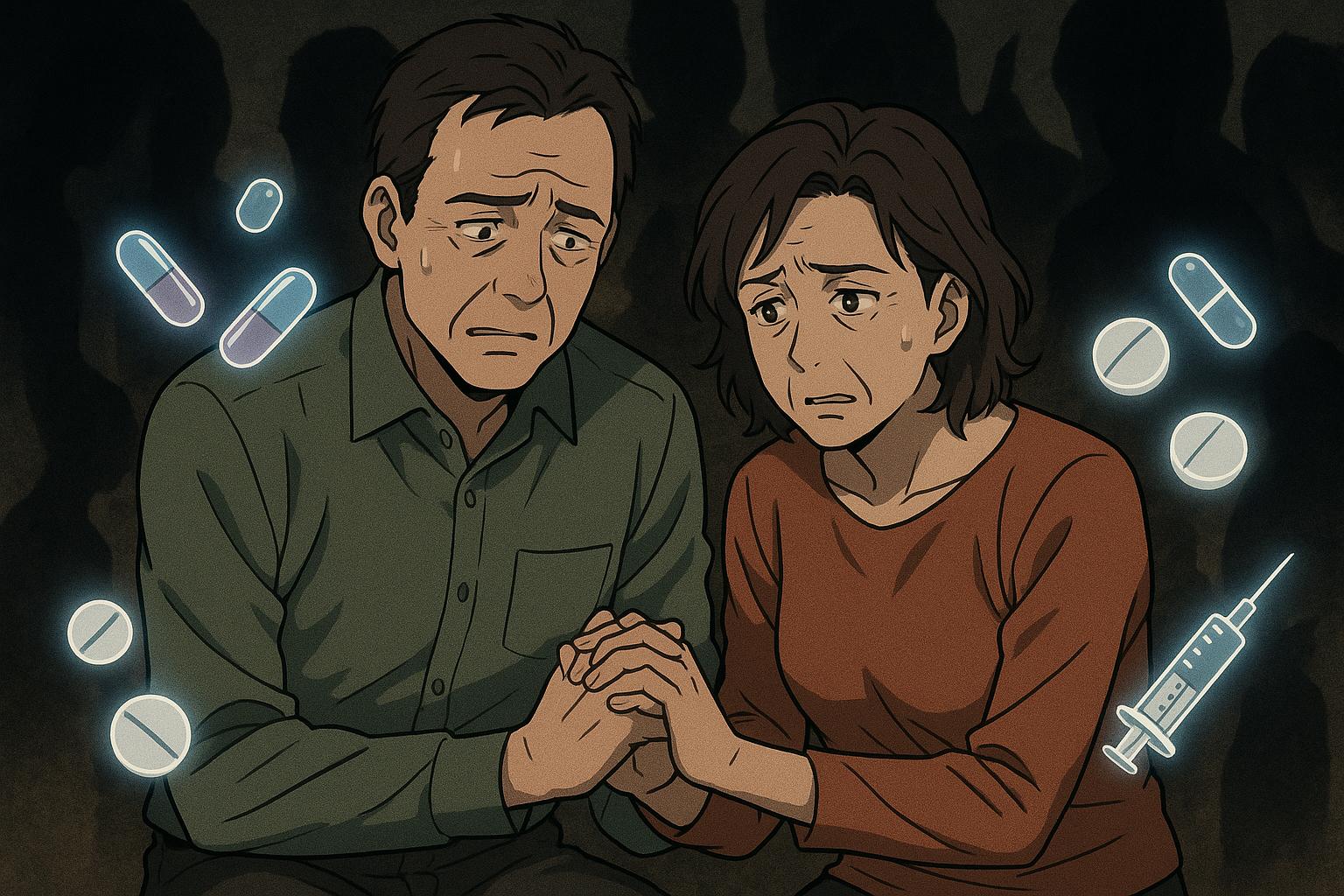Like many parents in their early 40s, Harry and Bella Thomson seized the opportunity for a child-free weekend last year, hoping to rekindle the spark in their marriage that had dimmed amidst the demands of daily life. However, their method of re-establishing intimacy was decidedly unconventional; they packed not only bags but also an array of recreational drugs—MDMA, ketamine, and a hallucinogen known as 2C-B—sourced from their local dealer. What began as a thrilling escape soon spiralled into a nightmarish scenario that illustrates a concerning trend in modern relationships.
The Thomsons’ experience highlights a growing prevalence of "chemsex," the use of illegal drugs to enhance sexual encounters. Initially, their adventurous weekend seemed successful, with Bella describing their first two days as filled with “the most erotic connection.” However, a fateful decision on the fourth day to consume ketamine resulted in Bella collapsing from dangerously low blood pressure and requiring hospitalisation. This alarming incident underscores an increasingly recognised public health concern; in London, paramedics respond to daily emergencies linked to chemsex, a phenomenon that has extended beyond its origins in gay party culture to infiltrate heterosexual communities.
The dangers associated with chemsex are not just anecdotal. Data indicate that drug-related health crises can have severe consequences. A recent report revealed that approximately three people die each month in London from incidents related to chemsex, although actual numbers may be underreported. Mental health experts have identified significant links between chemsex and psychiatric symptoms, such as anxiety, depression, and even psychosis, alongside risky sexual behaviours that can lead to high rates of sexually transmitted infections. Jane, a former participant in chemsex, recounted that her drug-augmented sexual experiences quickly became a dangerous cycle of anxiety leading to more drug use, leaving her feeling disconnected and trapped.
Ignacio Labayen de Inza, founder of the charity Controlling Chemsex, notes that the landscape of chemsex is evolving. “Ten years ago, chemsex was predominantly a phenomenon among men who have sex with men,” he states. “Now, it’s increasingly normalised among heterosexual couples.” His charity, established to assist individuals grappling with drug dependencies affecting their sexual lives, reports that a significant portion of their support is now directed towards women who feel their sexual experiences are unfulfilling without the stimulant effects of drugs. This shift highlights the need for greater awareness and understanding of the issue; where once it might have been associated with marginalised groups, chemsex has permeated mainstream social circles, particularly among the educated and affluent.
Sex expert Tracey Cox observes that the rise of chemsex can be attributed to changing social norms. “Boredom with sex is an age-old struggle for couples,” she explains. “While alcohol was once the go-to for loosening inhibitions, MDMA and similar substances are now increasingly seen as acceptable companions in the bedroom.” This reflects a notable evolution in societal attitudes towards drug use, especially among middle-class individuals who participate in social activities that include casual drug consumption, like microdosing at dinner parties.
While these drugs may create an illusion of heightened pleasure, they carry significant risks. The impairment of decision-making can lead to unsafe sexual practices and serious health issues. Moreover, combining substances such as GHB with depressants like alcohol can be particularly hazardous, sometimes resulting in unconsciousness or loss of control. Cox warns, “Chemsex can mask deeper issues rather than resolve them. Relying on drugs to fix problems can create a cycle of dependency, requiring users to constantly escalate their consumption for the same effect.”
The Thomsons’ harrowing experience serves as a stark reminder of this precarious balance. Following Bella’s hospitalisation, both individuals vowed to reassess their approach to intimacy, acknowledging the thin line between exploration and recklessness. “We were incredibly naive,” Bella reflects, emphasising the lesson they learned about the risks associated with their choices.
As the conversation around chemsex evolves, it is crucial for society to respond with empathy and practical support rather than judgement. Experts like Labayen de Inza advocate for more accessible resources for those struggling with addiction and related health risks, particularly in communities that might not traditionally seek help. Ultimately, fostering open discussions about sexuality and healthy relationships can encourage safer practices and promote well-being, steering individuals away from potentially destructive patterns.
In a climate where drugs and modern relationships intersect, it becomes necessary to seek pleasure through safer, non-destructive means. The Byrnes’ journey, though fraught with danger, serves as a powerful narrative in understanding and addressing the complexities of chemsex, its implications for mental health, and the evolving landscape of intimacy in today’s society.
Reference Map:
- Paragraphs 1, 2, 3, 4, 5, 6, 7, 8
- Paragraphs 2, 3
- Paragraph 6
- Paragraph 7
- Paragraph 7
- Paragraph 7
- Paragraph 7
Source: Noah Wire Services
